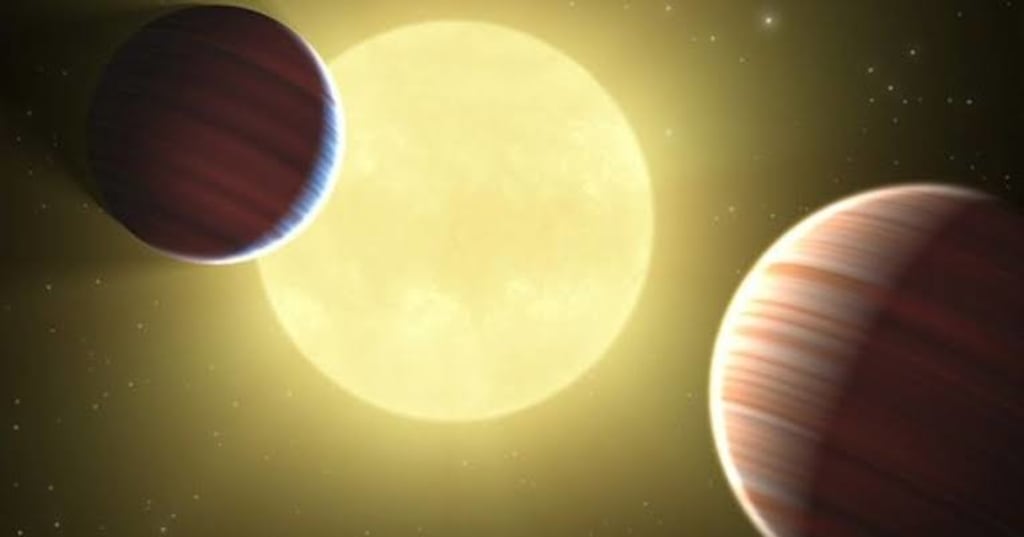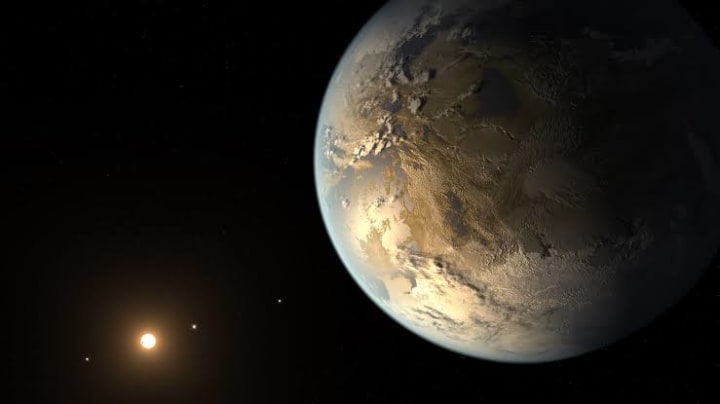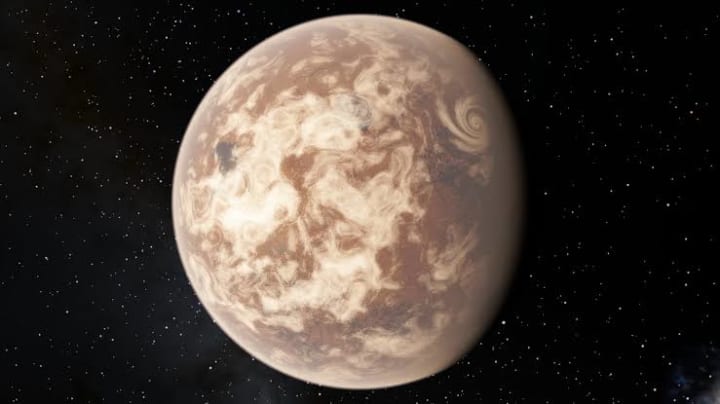Exoplanets in the Habitable Zone: Five Worlds That Could Be Home to Alien Life
Five Worlds in the Habitable Zone: A Closer Look at Exoplanets That Could Host Alien Life

Kepler-186f

Kepler-186f is an exoplanet that was discovered by NASA's Kepler space telescope in 2014. It is located about 500 light-years away from Earth in the constellation Cygnus.
Kepler-186f is particularly interesting because it is the first Earth-size planet that was found orbiting within the habitable zone of its star. The habitable zone, also known as the "Goldilocks zone," is the region around a star where conditions are just right for liquid water to exist on the surface of a planet.
Kepler-186f is located on the outer edge of its star's habitable zone, which means that it is likely to be a cooler planet, and may have a more temperate climate.
Based on observations of the star's light and the planet's size, astronomers estimate that Kepler-186f is about 1.1 times the size of Earth, and it orbits its star once every 130 days. Its star is a red dwarf, which is smaller and cooler than the Sun, and has about half the mass and radius of our star.
While Kepler-186f is considered to be one of the most Earth-like exoplanets discovered to date, there is still much we don't know about it.
For example, we do not know whether it has an atmosphere or what its surface is like. It is also not clear whether it has the right conditions to support life, although its location within the habitable zone makes it a promising candidate for further study.
Gliese 581g

Gliese 581g is an exoplanet that was discovered orbiting the red dwarf star Gliese 581 in 2010. It is located about 20 light-years away from Earth in the constellation Libra, and was the sixth planet to be discovered around the star.
Gliese 581g is a super-Earth exoplanet, meaning that it is larger and more massive than Earth, but smaller than gas giants like Jupiter. It is believed to be about 3 times the mass of Earth, and about 1.5 times larger in diameter.
It orbits its host star in about 37 days, at a distance of about 0.15 astronomical units (AU), which is within the star's habitable zone, where liquid water could potentially exist on its surface.
Gliese 581g is of particular interest because it is one of the few exoplanets that is believed to be potentially habitable. Its mass and radius suggest that it is likely a rocky planet, and its location within the habitable zone means that it could have a stable climate and potentially support liquid water on its surface.
However, the existence of Gliese 581g is still a matter of some controversy. While its discovery was initially confirmed by a number of studies, subsequent analyses of the data have cast doubt on its existence.
Some scientists have suggested that the signals that were initially thought to be caused by the planet could have been the result of noise or other artifacts in the data.
In short, while Gliese 581g is a potentially exciting exoplanet that could have the right conditions to support life, its existence and properties are still a matter of debate and further study is needed to confirm its existence and determine its characteristics.
Gliese 667Cc

Gliese 667Cc is an exoplanet located about 22 light-years away in the constellation Scorpius. It was discovered in 2011 orbiting the star Gliese 667C, which is part of a triple star system.
Gliese 667Cc is a super-Earth exoplanet that is believed to be about 4.5 times the mass of Earth and about 1.5 times its diameter.
It orbits its host star at a distance of about 0.125 astronomical units, which is within the star's habitable zone, where liquid water could potentially exist on its surface.
While Gliese 667Cc is considered to be a potentially habitable planet, it is also believed to be a "tidally locked" planet, which means that one side of the planet always faces the star while the other side is perpetually in darkness.
This could create extreme temperature differences between the two sides of the planet, making it difficult for life to exist.
However, recent studies have suggested that the planet's atmosphere could circulate heat from the day side to the night side, potentially mitigating the extreme temperatures and making the planet more habitable.
Overall, while Gliese 667Cc is a potentially exciting exoplanet that could have the right conditions to support life, more research is needed to determine its exact properties and potential for habitability.
Kepler-22b

Kepler-22b is an exoplanet located about 600 light-years away from Earth in the constellation Cygnus. It was discovered in 2011 by NASA's Kepler space telescope.
Kepler-22b is a "super-Earth" exoplanet, meaning that it is larger and more massive than Earth, but smaller than gas giants like Jupiter. It is believed to be about 2.4 times the radius of Earth and about 36 times its mass.
It orbits its host star, Kepler-22, at a distance of about 0.85 astronomical units, which is within the star's habitable zone.
While Kepler-22b is considered to be a potentially habitable planet, we do not know much about its properties. For example, we do not know whether it has an atmosphere, whether it has a rocky surface, or whether it could support life.
Overall, Kepler-22b is a potentially exciting exoplanet that could have the right conditions to support life, but more research is needed to determine its exact properties and potential for habitability.
HD 40307g

HD 40307g is an exoplanet located about 42 light-years away in the constellation Pictor. It was discovered in 2012 orbiting the star HD 40307, which is a K-type main-sequence star that is slightly smaller and cooler than our sun.
HD 40307g is a "super-Earth" exoplanet that is believed to be about 7 times the mass of Earth and about twice its radius. It orbits its host star at a distance of about 0.15 astronomical units, which is within the star's habitable zone, where liquid water could potentially exist on its surface.
While HD 40307g is considered to be a potentially habitable planet, its habitability is still uncertain. For example, it is not known whether the planet has a rocky surface, or whether it has an atmosphere that could support life.
In addition, the existence of HD 40307g has been the subject of some debate. While its discovery was initially confirmed by a number of studies, subsequent analyses of the data have suggested that the planet's existence is not as certain as initially thought.
Some scientists have suggested that the signals that were initially thought to be caused by the planet could have been the result of noise or other artifacts in the data.
Overall, HD 40307g is a potentially exciting exoplanet that could have the right conditions to support life, but more research is needed to determine its exact properties and potential for habitability, as well as to confirm its existence.
About the Creator
Enjoyed the story? Support the Creator.
Subscribe for free to receive all their stories in your feed. You could also pledge your support or give them a one-off tip, letting them know you appreciate their work.





Comments
There are no comments for this story
Be the first to respond and start the conversation.